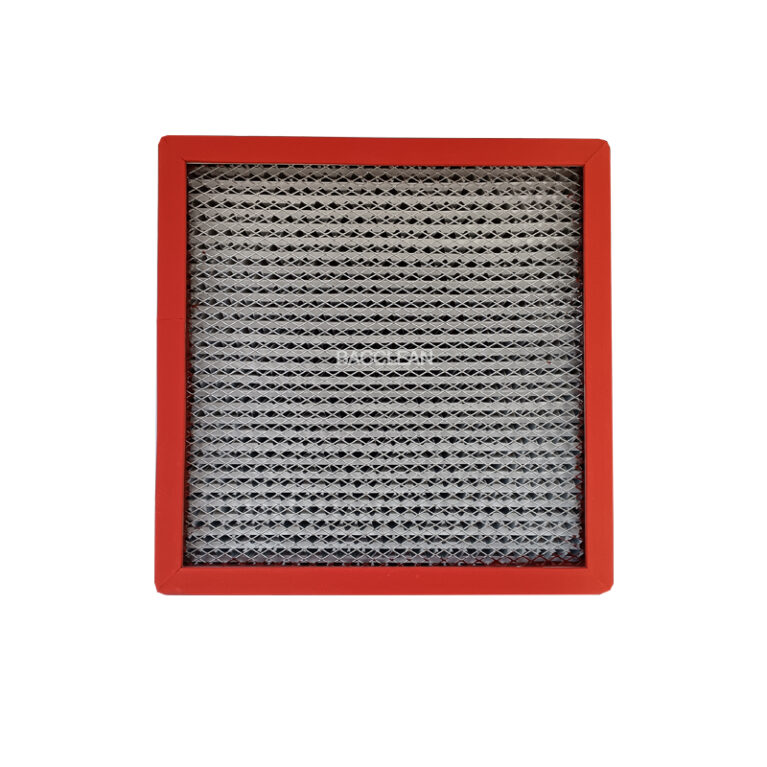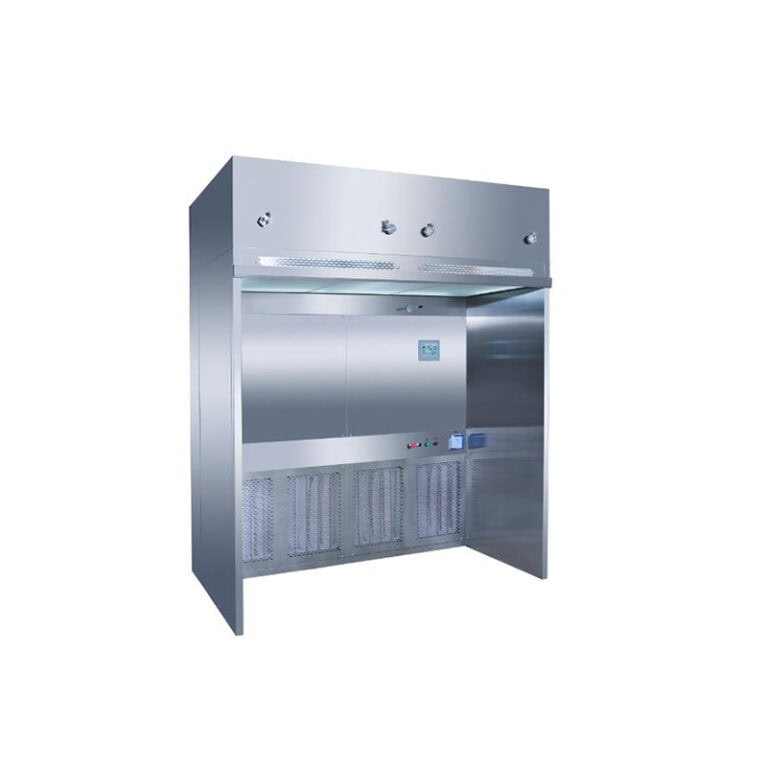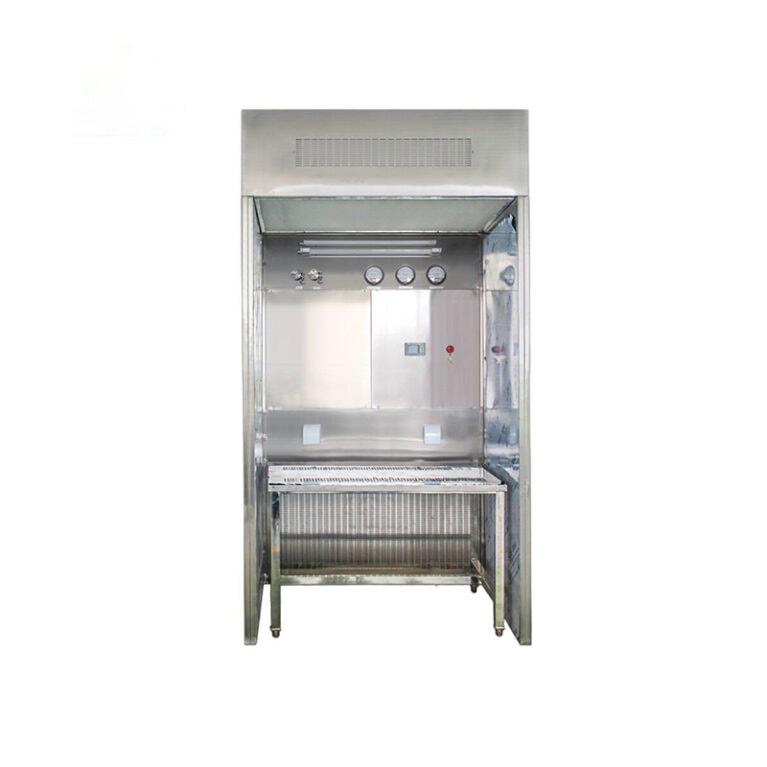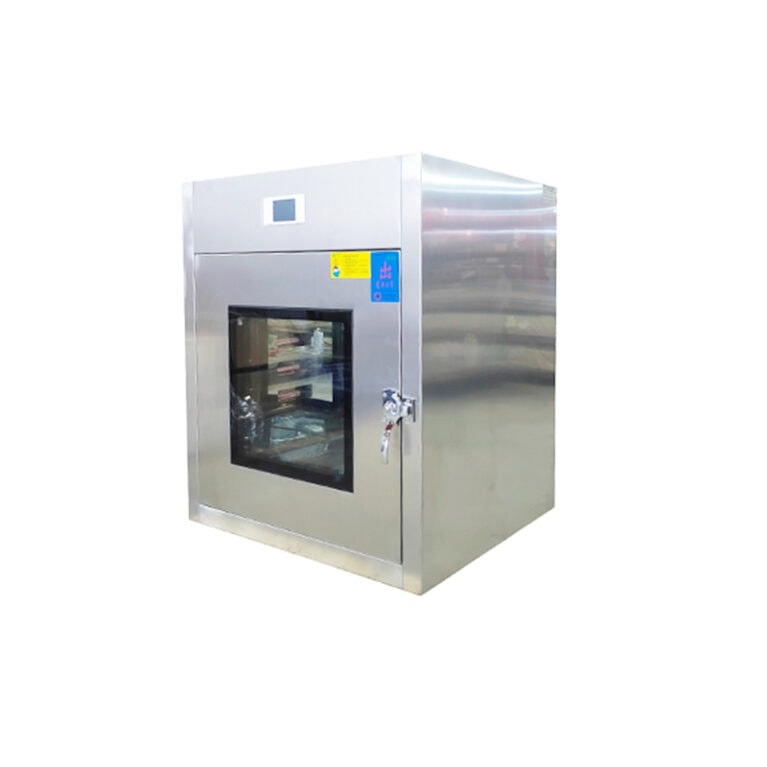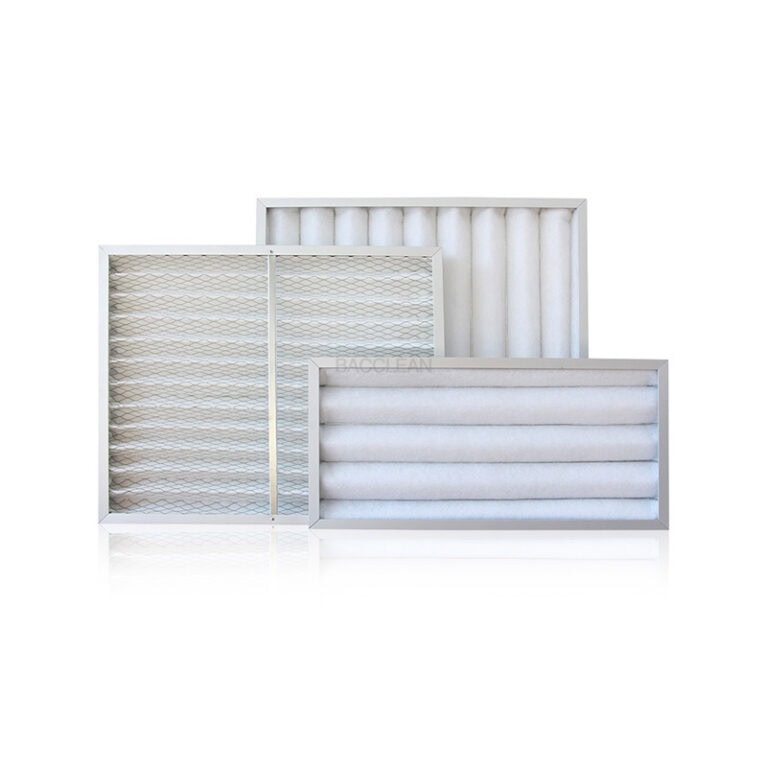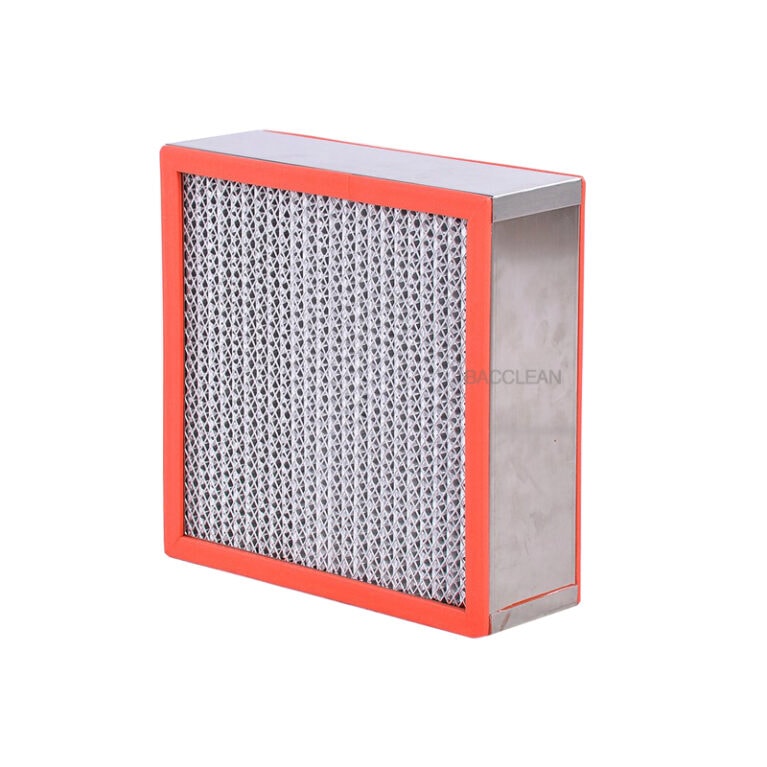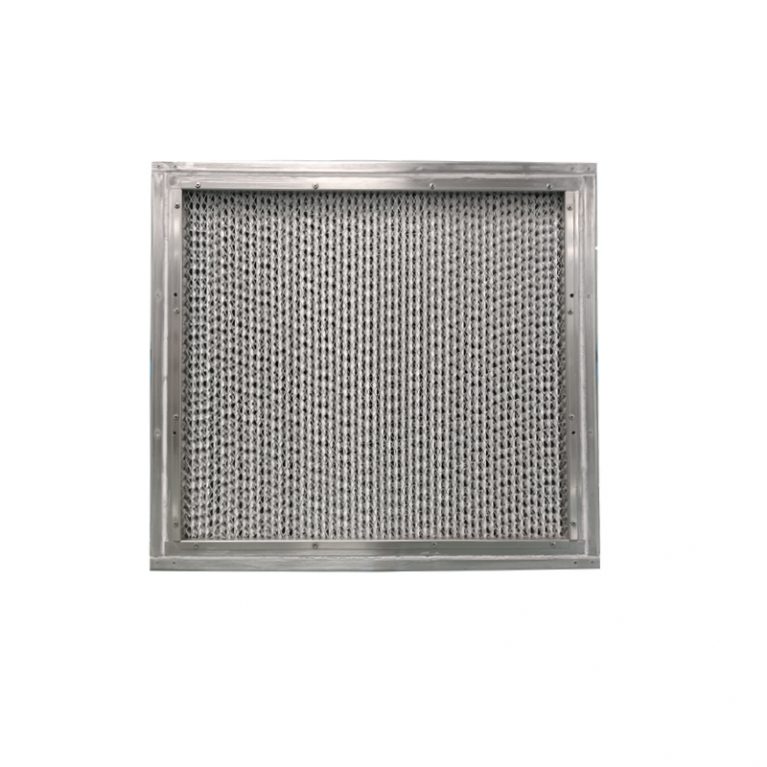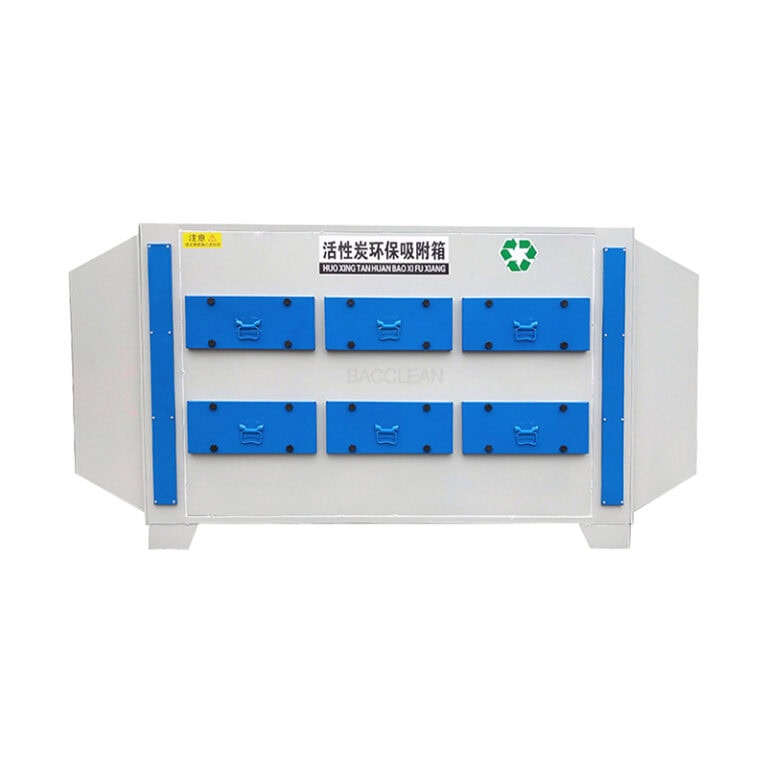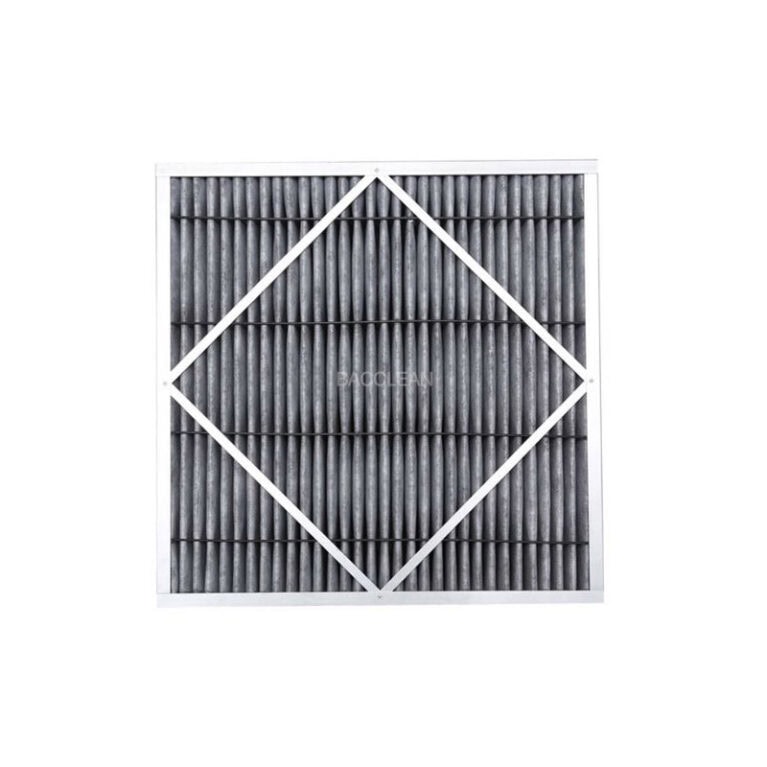La ventana de transferencia empotrada es un dispositivo que se instala en las paredes de salas blancas, laboratorios, quirófanos de hospitales y otros lugares que requieren un control estricto de la limpieza ambiental. Se utiliza principalmente para transferir artículos entre zonas de diferentes grados de limpieza o entre entornos internos y externos, minimizando al máximo la contaminación cruzada del aire. Su principio de funcionamiento gira en torno a "aislar la contaminación y lograr una purificación eficaz", como se indica a continuación:
I. Diseño del núcleo: Aislamiento físico y mecanismo de enclavamiento
Estructura de aislamiento bidireccional
Las ventanas de transferencia suelen ser de estructura tipo caja, empotradas en la pared, con puertas a ambos lados (generalmente de acero inoxidable y con buenas prestaciones de estanqueidad), que conducen respectivamente a dos zonas de diferente grado de limpieza (como zona limpia y zona no limpia).
Su núcleo es el dispositivo de enclavamiento: cuando se abre una puerta lateral, la otra se bloquea mediante dispositivos mecánicos o electrónicos. No puede abrirse simultáneamente, con lo que se impide la convección directa de aire entre las dos zonas y se evita que los contaminantes entren con el aire en la zona limpia.
Diseño de sellado
La zona de contacto entre la puerta y el cuerpo de la caja suele estar equipada con tiras de sellado antienvejecimiento y elásticas para garantizar la estanqueidad cuando la puerta está cerrada y reducir aún más las fugas de aire.
Ii. Proceso de purificación: Eliminar los contaminantes de la superficie de los artículos
La ventana de transferencia no es un mero "paso", sino un pequeño espacio de purificación. A través del dispositivo de purificación incorporado, la superficie de los artículos transferidos se desinfecta o se limpia de polvo. El método específico se diseña en función de los requisitos del lugar.
Desinfección ultravioleta (de uso común)
Las lámparas germicidas ultravioletas (con una longitud de onda de 254 nm) están instaladas en la parte interior de la caja. Cuando se colocan artículos en el interior y se cierran las puertas de ambos lados, se activan las lámparas ultravioleta, que utilizan rayos ultravioleta para destruir la estructura de ADN o ARN de los microorganismos (como bacterias, virus y hongos), logrando así el propósito de esterilización y desinfección.
Nota: Los rayos ultravioleta son nocivos para la piel y los ojos humanos. Por lo tanto, está diseñado con protección de enclavamiento - cuando se abre cualquiera de las puertas laterales, la lámpara ultravioleta se apagará automáticamente.
Filtración de alta eficacia (HEPA/ULPA
Algunas ventanas de transferencia (como las utilizadas en las industrias electrónica y farmacéutica con requisitos de limpieza extremadamente altos) están equipadas con filtros de alta eficiencia. Cuando el ventilador está en marcha, el aire del interior de la caja se ve obligado a pasar a través del filtro HEPA/ULPA (con una eficacia de filtración de ≥99,97% para partículas de 0,3μm), formando un flujo unidireccional (como flujo laminar vertical o flujo laminar horizontal), que arrastra y filtra las partículas de polvo de la superficie de los artículos, manteniendo la limpieza en el interior de la caja.
Desinfección por ozono (auxiliar
En algunos escenarios especiales, se utilizan generadores de ozono para desinfectar artículos aprovechando la fuerte propiedad oxidante del ozono. Sin embargo, el ozono debe utilizarse en un entorno desatendido y, tras la desinfección, es necesario ventilarlo para que se degrade, a fin de evitar residuos que puedan afectar al cuerpo humano.
Aerosol/toallita con alcohol (asistencia manual)
Para los artículos de alto riesgo, los operadores pueden desinfectar primero la superficie con alcohol antes de colocar los artículos delante de la ventana de transferencia y, a continuación, utilizar la función de purificación incorporada de la ventana de transferencia para proporcionar una doble protección.
Iii. Procedimientos operativos: Transferencia normalizada para reducir la contaminación
Los operarios de zonas no limpias deben colocar los artículos en la ventana de transferencia, cerrar esta puerta lateral y asegurarse de que el enclavamiento es efectivo.
Poner en marcha el dispositivo de purificación (como lámparas ultravioletas o ventiladores) y realizar el tratamiento de purificación según el tiempo establecido (normalmente de 15 a 30 minutos, ajustado según el método de desinfección).
Una vez finalizada la depuración, el operario de la zona limpia confirma que la otra puerta lateral se ha desbloqueado, abre la puerta lateral de la zona limpia, saca los artículos y, a continuación, cierra la puerta para completar la transferencia.
Cuando sea necesario, el interior de la ventana de transferencia puede limpiarse con regularidad (por ejemplo, limpiando la pared interior con un desinfectante) para mantener su estado de limpieza.
Iv. Escenarios de aplicación: Funciones personalizadas bajo demanda
Hospitales: Utilizados principalmente para trasladar instrumentos, muestras, etc. entre quirófanos y zonas contaminadas, así como entre laboratorios y salas, para evitar infecciones cruzadas.
Industria farmacéutica/alimentaria: Se utiliza para el traslado de materias primas y productos semiacabados entre talleres de producción y zonas de almacenamiento, así como entre talleres de diferentes niveles de limpieza, en cumplimiento de los requisitos de las BPF (Buenas Prácticas de Fabricación de Productos Farmacéuticos).
Industria electrónica/semiconductores: Transferir chips, componentes de precisión, etc., para evitar la contaminación por partículas de polvo.
Laboratorio: En un laboratorio de bioseguridad se transfieren muestras y reactivos para evitar la propagación de microorganismos patógenos.
Resumen
La ventana de transferencia incorporada, mediante un doble mecanismo de "aislamiento físico (enclavamiento + sellado) + purificación activa (desinfección/filtración)", no sólo permite la transferencia transregional de artículos, sino que también maximiza el corte de la vía de transmisión de contaminantes. Es un dispositivo clave para garantizar la estabilidad de un entorno limpio. Su diseño debe personalizarse en función de los requisitos específicos de nivel de limpieza (como los grados ISO 5-8) y los tipos de contaminantes (microorganismos, polvo, etc.) para garantizar un equilibrio entre la eficacia de la purificación y la seguridad operativa.
